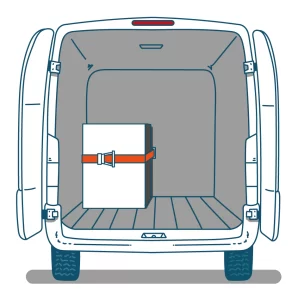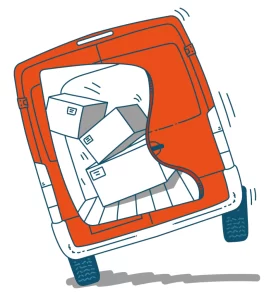Check what you know
Did you know?
Best practice tips
Check what you know
Did you know?
- Each year, DVSA issue over 2,000 prohibitions to drivers of vehicles which present a road safety risk because of poor load security.
- Where a vehicle’s load is deemed to be in a dangerous condition, the driver can receive 3 penalty points and a licence endorsement.
- Drivers and their employers can be fined up to £5,000 per overloading offence.
The driver is required to ensure the load is secured to the vehicle so it cannot cause a danger to anyone.
Consequences of poor load securing can result in death or serious injury, damaged reputation and prosecution.
Best practice tips

- The load should be placed against the bulkhead to prevent the load sliding forward.
- Heavy items should be stacked at the bottom and lighter items at the top.
- All load restraints in use should be in good condition and appropriate for the load.
- If any part of the load moves while driving, the driver should pull in a safe place to re-secure it.
- The load should be loaded so its weight is distributed evenly across the vehicle.
- The load should be stable and secured to prevent it sliding forwards and backwards or toppling over.
The loading, securing of goods on vehicles, and their unloading, falls under two areas of law in the UK:
- The Road Traffic Act 1988 and workplace safety legislation;
- The Health and Safety at Work Act 1974.
View government guidance on securing loads on HGVs and Goods Vehicles here.
 Incidents happen when drivers and employers underestimate how much restraint is needed to keep a load on a vehicle. Load securing systems in use should be appropriate for both the loads being carried and the vehicles being used.
Incidents happen when drivers and employers underestimate how much restraint is needed to keep a load on a vehicle. Load securing systems in use should be appropriate for both the loads being carried and the vehicles being used.
Drivers should be mindful of their driving habits to ensure safety. The main reasons for a load moving include roundabouts, slip roads, long (fast) corners, under braking and swerving to avoid obstacles.
Categories


This information sheet is free for employers to download and distribute to their drivers.
It may not be amended in any way | Copyright 2022 National Highways.